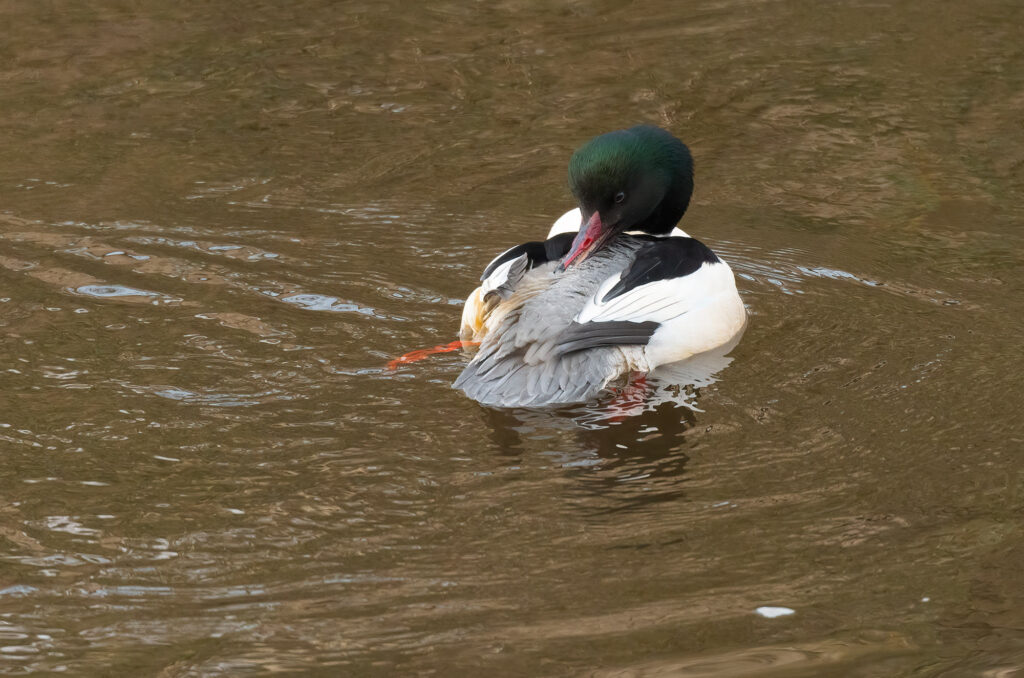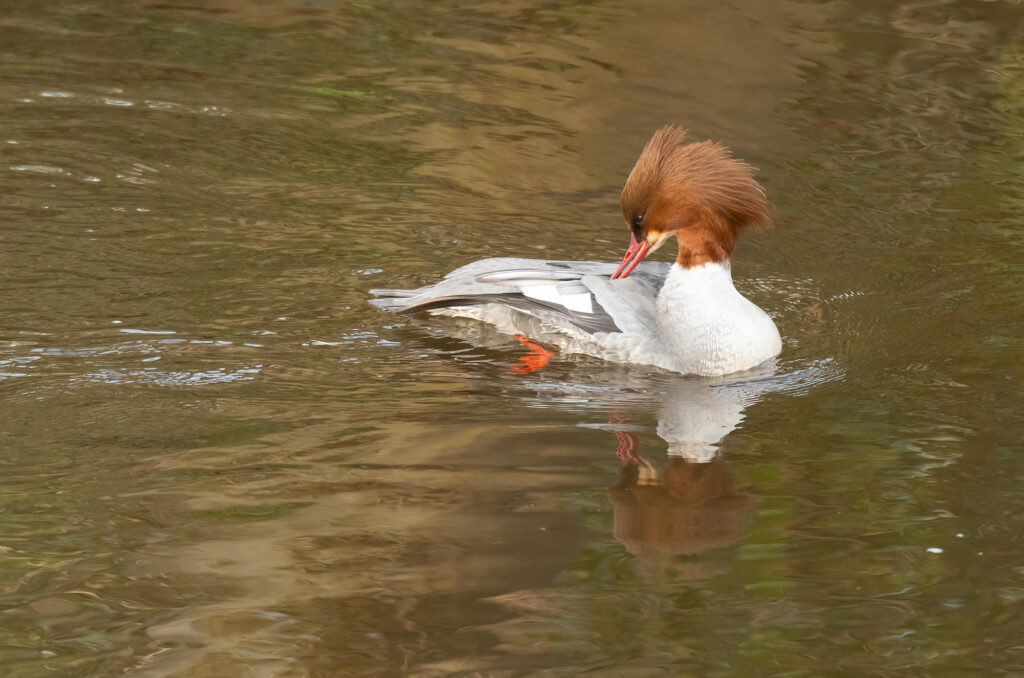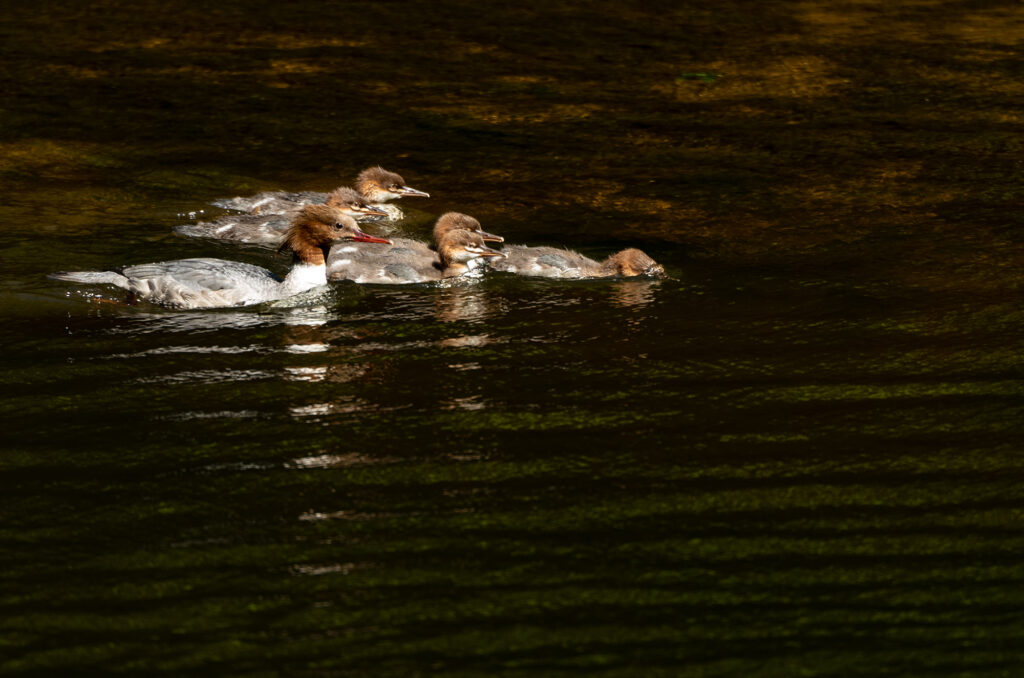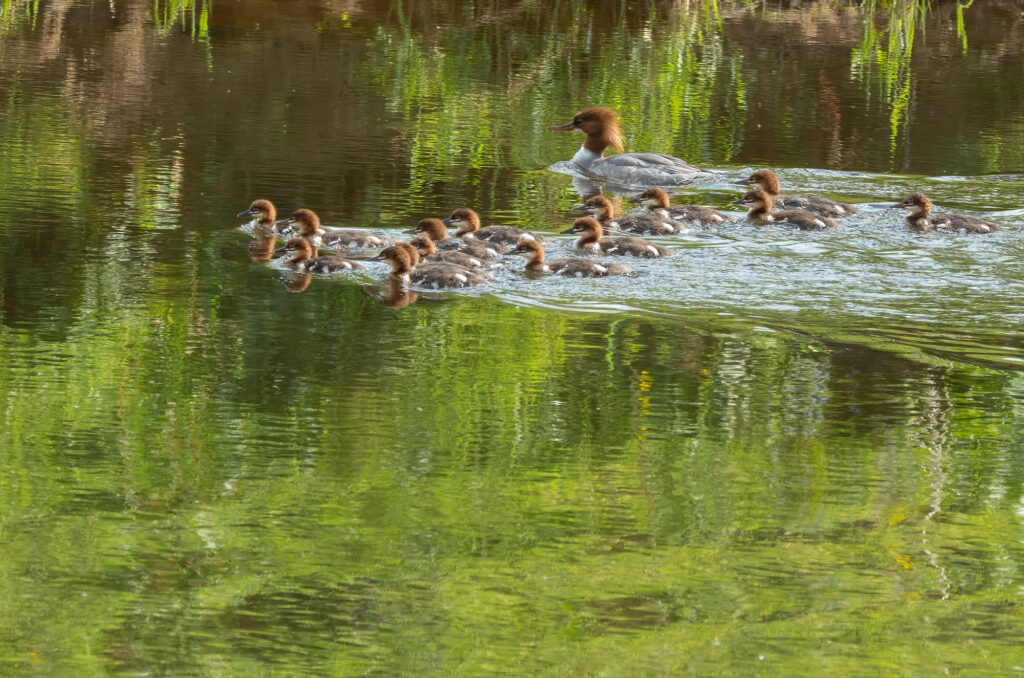As rivers swell from full to bursting, after seemingly constant rainfall and ice melt for weeks, it is hard to imagine anything swimming against the flow. The water seethes on its journey, the speed and ferocity of it obvious to all but the goosander.
The goosander is a duck, but not really. I mean, other ducks don’t look and behave like the goosander. It coolly glides on the surface. Short strokes of its powerful feet driving it along in the direction it wants to go while the mallards seem half dragged along at the river’s mercy. And then it gracefully dives underwater with a little leap, staying down for what seems to be far too long for a duck before reappearing some distance away.
The goosander is one of the few duck species that catch fish to eat, along with the other ‘sawbill’ ducks – the red-breasted merganser and smew. Goosanders hunt for almost any fish species they can swallow, always opting for what is most abundant. They can hunt after dark due to their excellent vision and grab hold of incredibly slippery prey due to the serrated edges of their bills (hence the ‘sawbill’ categorisation), which you can see on the open bill of the male in the image below. These birds are also cooperative hunters, working together to drive shoals of fish into shallow water or startling them to ensure a successful strike. They can stay underwater for up to two minutes, but the dive length is usually around 30 seconds.

I have learnt the hard way that goosanders can disappear incredibly quickly. As with all wildlife photography subjects, the more time you spend watching these diving ducks, the easier it becomes to anticipate their movements. In my experience, these birds are also easily disturbed, so it is worth taking all the necessary steps to ensure they are comfortable in your presence, such as keeping your distance and staying quiet and still. It was a privilege to watch a pair preening next to each other, knowing they were relaxed.

Between June and October, the goosanders you see on Scottish rivers will be females. The drakes strangely disappear at that time of year, although this particular mystery was solved recently; the drakes travel to northern Scandinavia on a moult migration, while the females stay put.
When it comes to breeding, goosanders are unusual again as they often nest in trees rather than in vegetation on the ground – as is the case with most duck species. These nests can be anything from 1 metre to a vertigo-inducing 30 metres off the ground, but they also use holes and hollows when suitable trees are not available.

It was a thrill to spot the goosander family gliding down the river towards us shown in the image above. As you can see, the ducklings were growing fast and were not riding around on their mother’s back anymore, but they were still pretty fluffy. That said, they were already developing that sleek goosander glide and steely goosander stare that the adults have. They were keeping up with the female, and it was tricky to get them in focus as they sped along the River Ayr in and out of the bright sunlight. A goosander brood is usually around 12 babies but can be up to 17. I also managed to photograph the family below, where the female was shepherding 15 individuals up the river.

If you are looking for a subject that defies convention, the goosander is the diving duck you want to glide into the frame.

